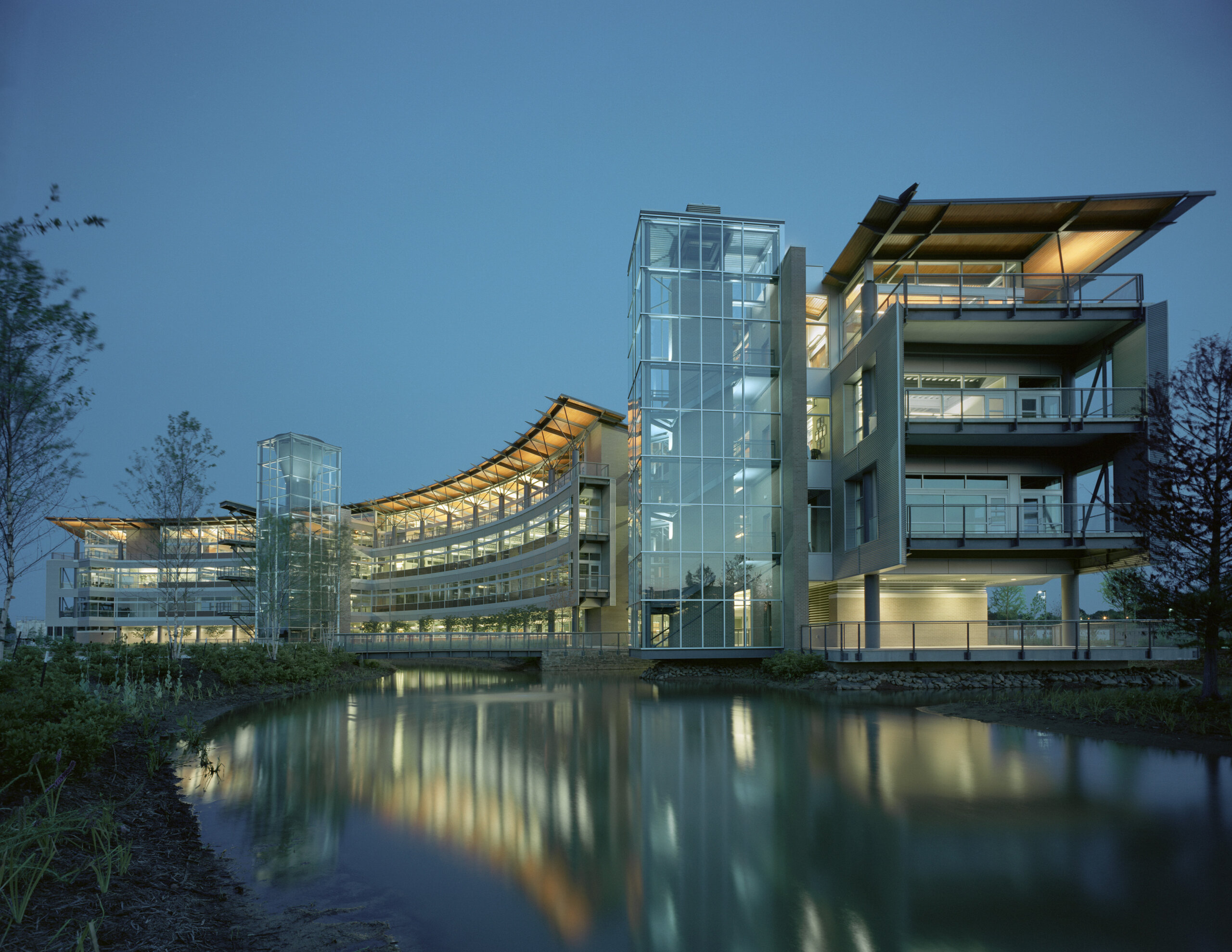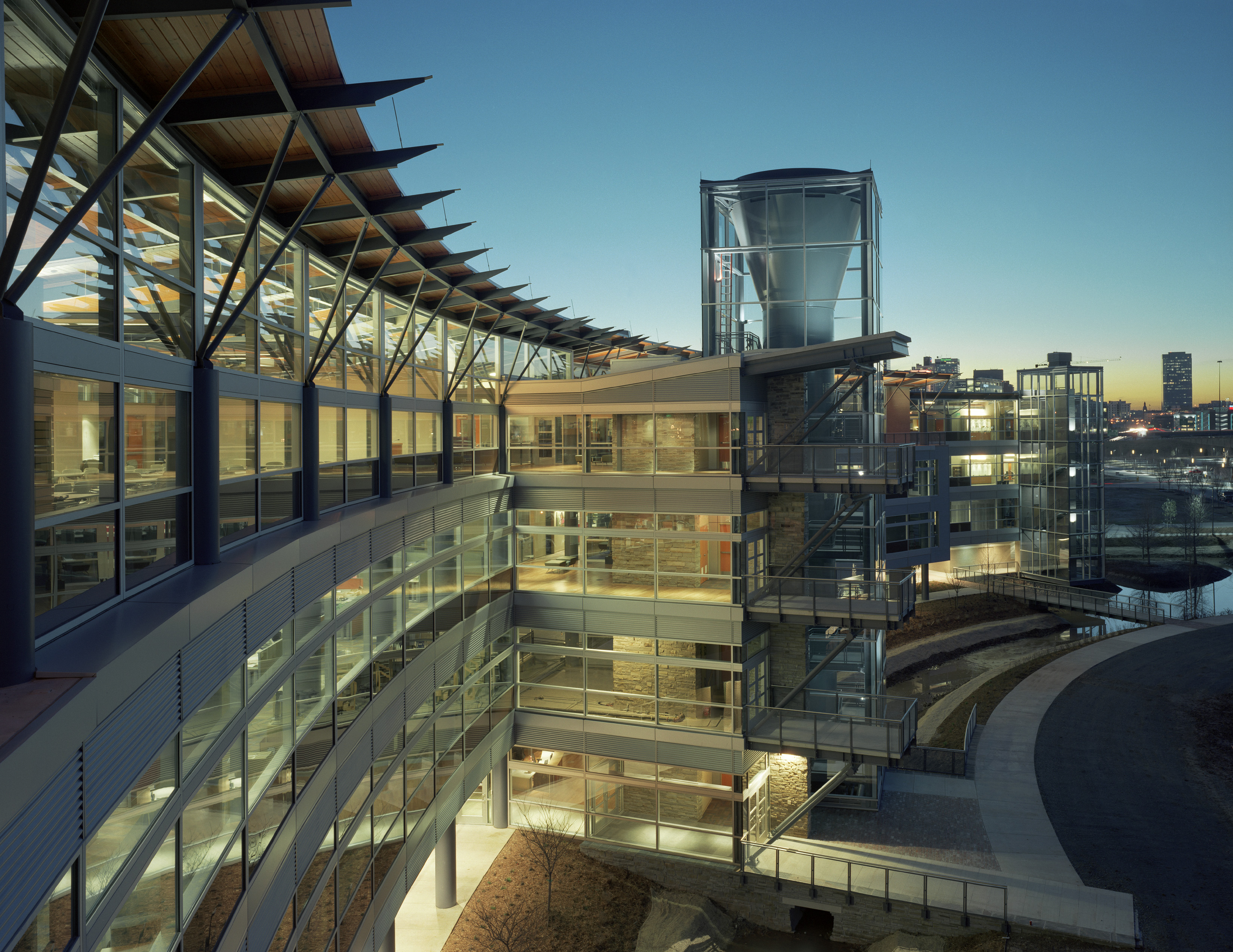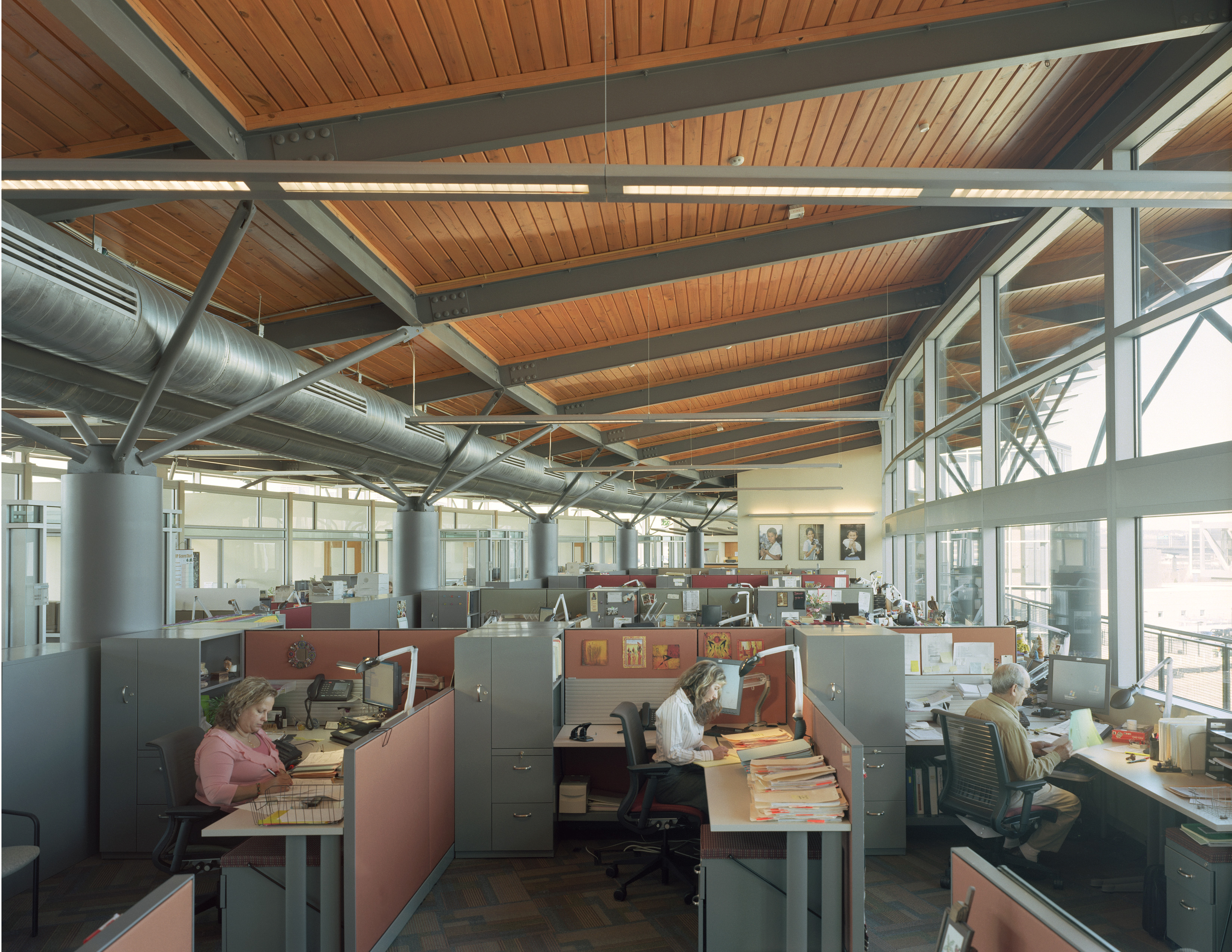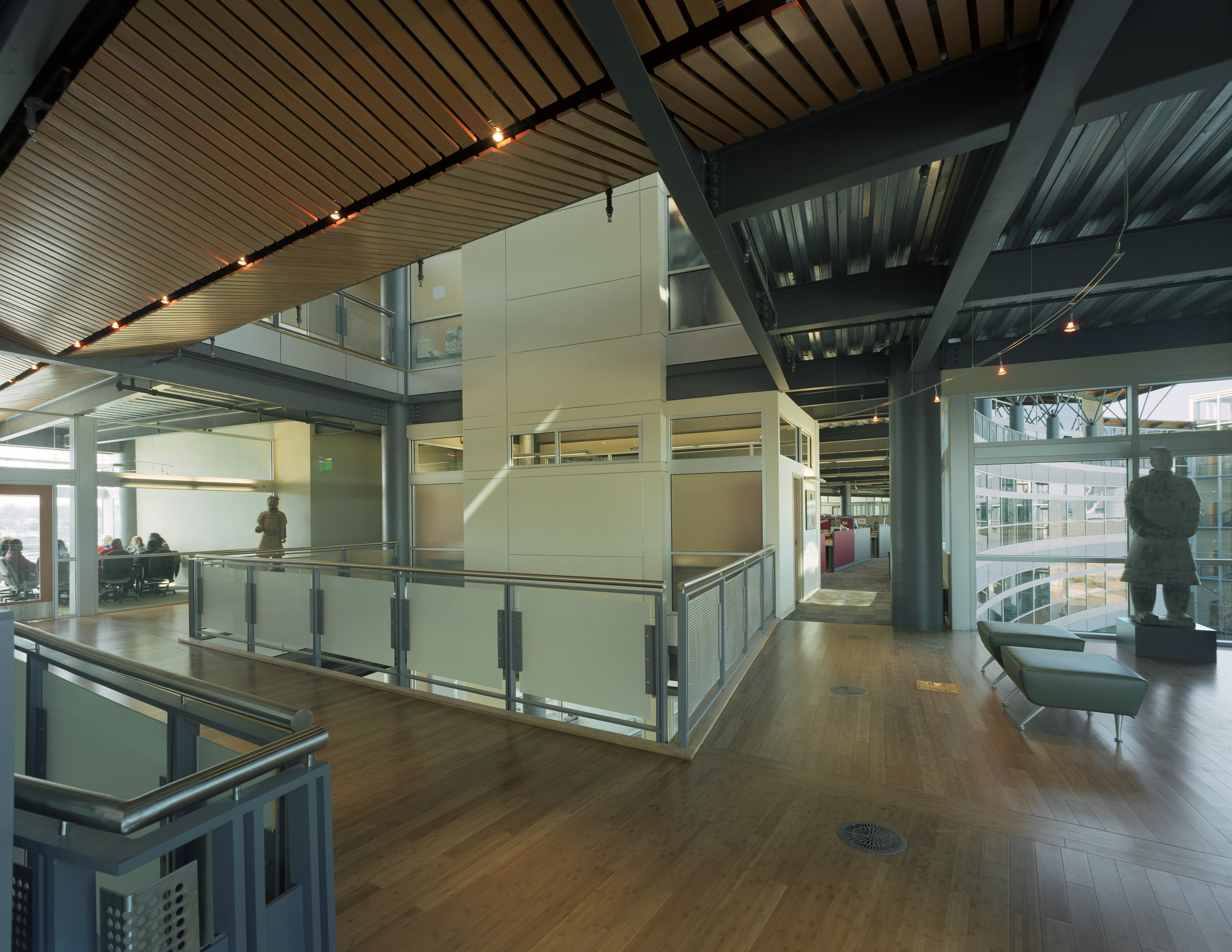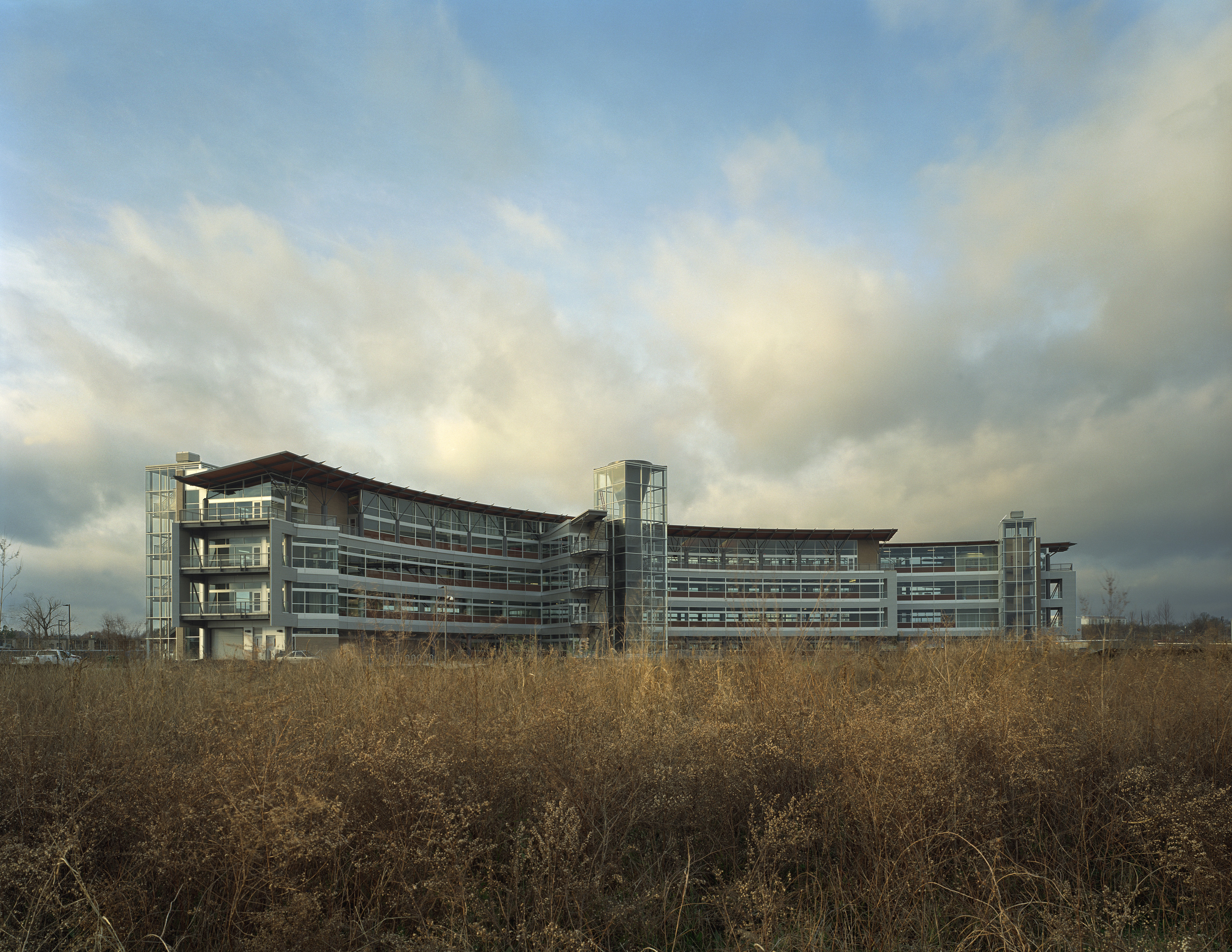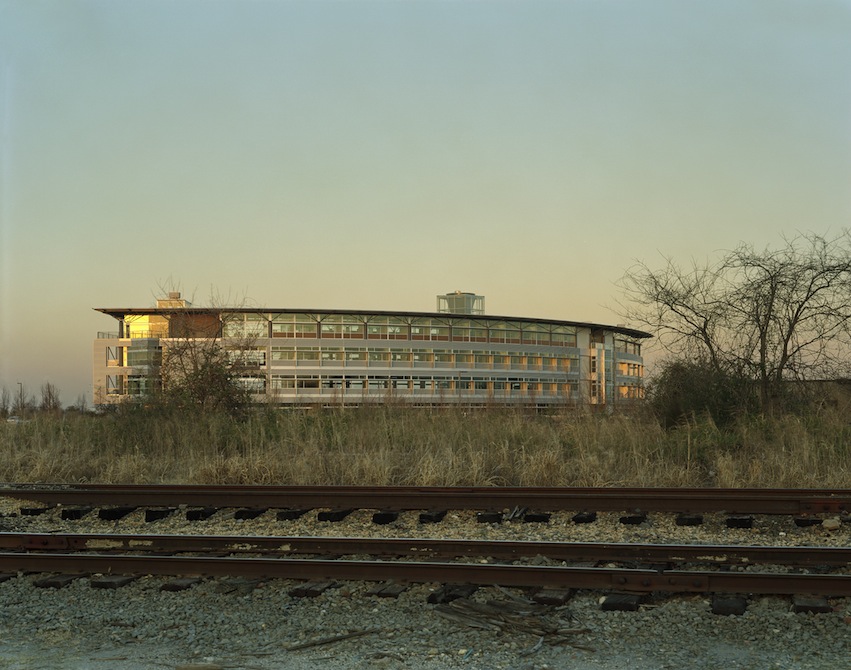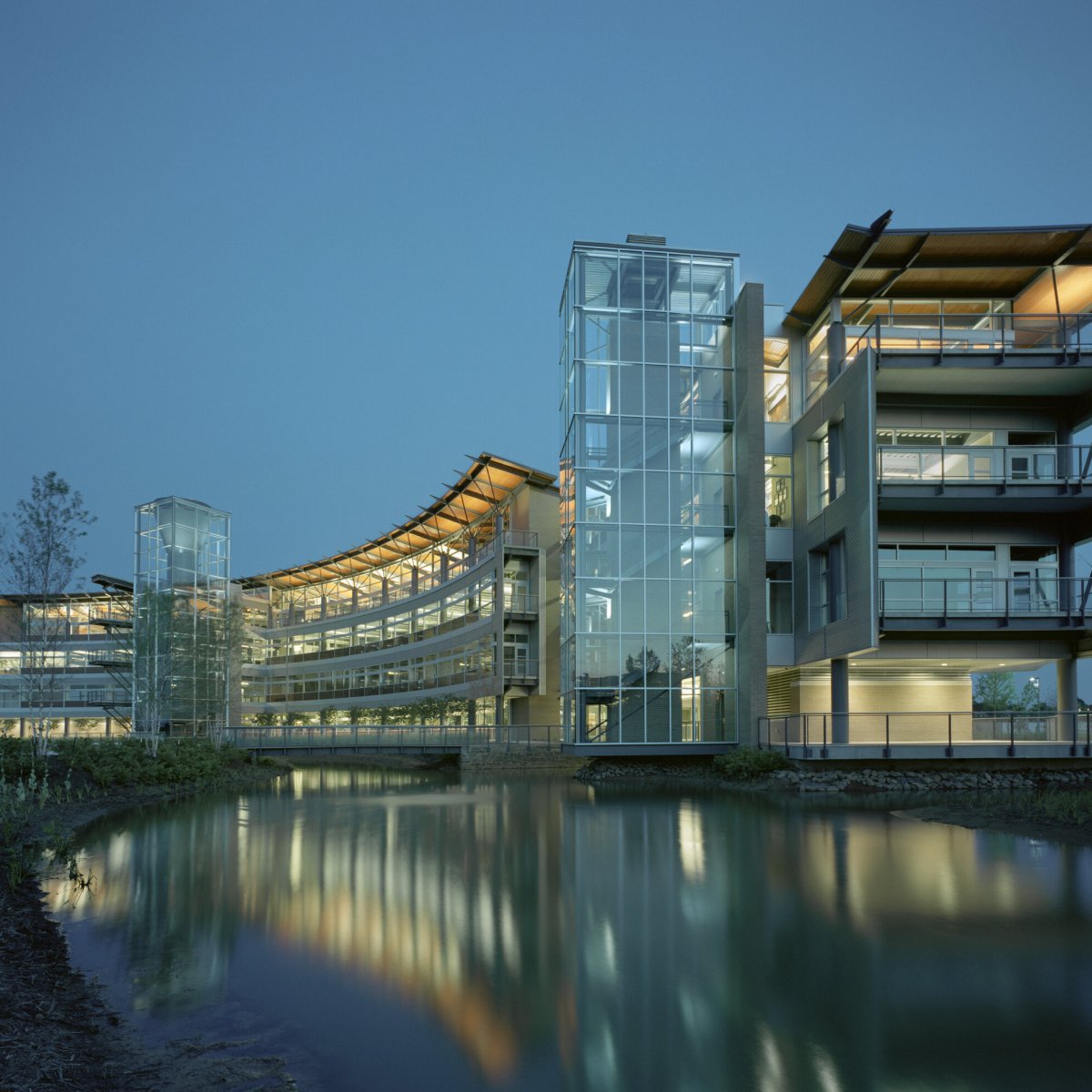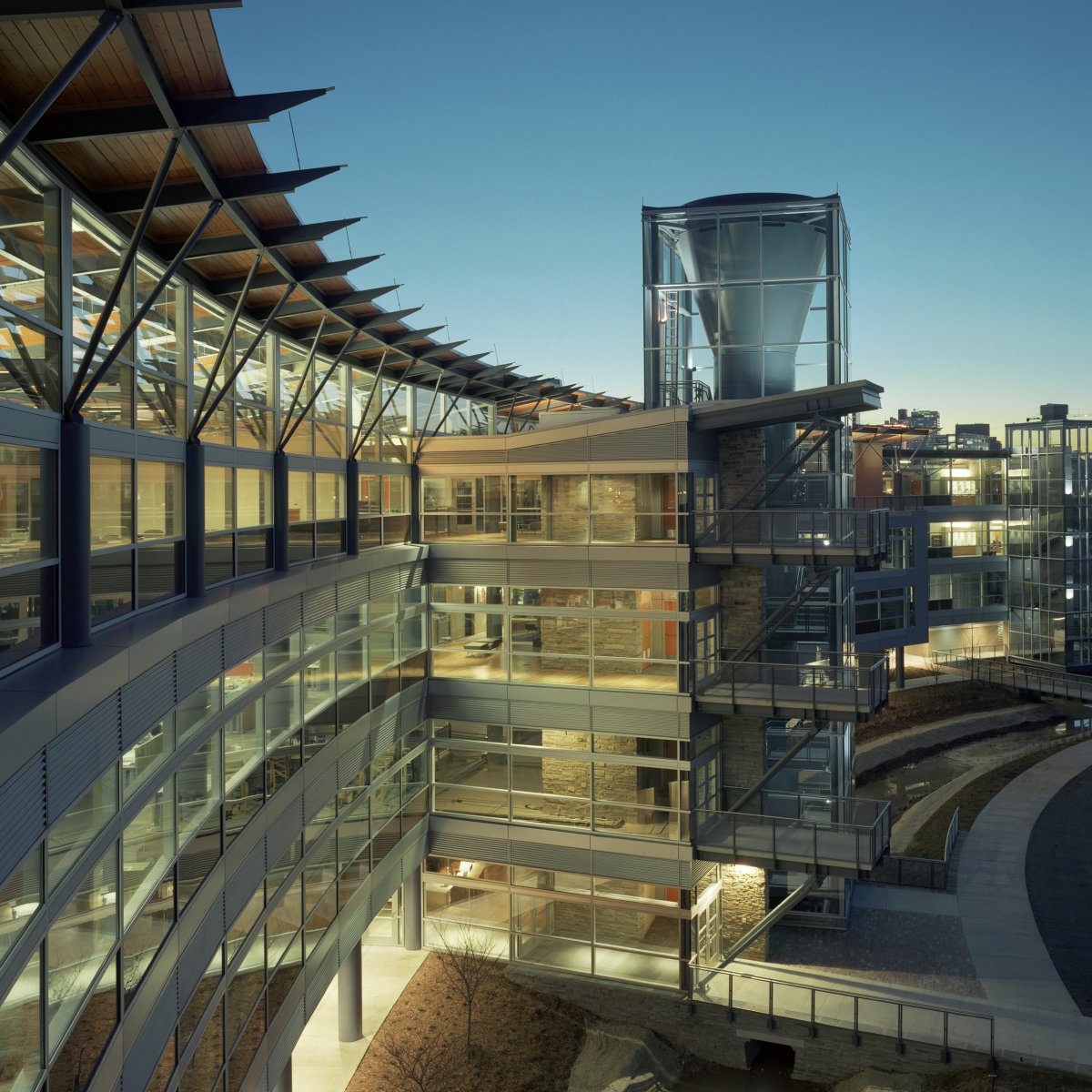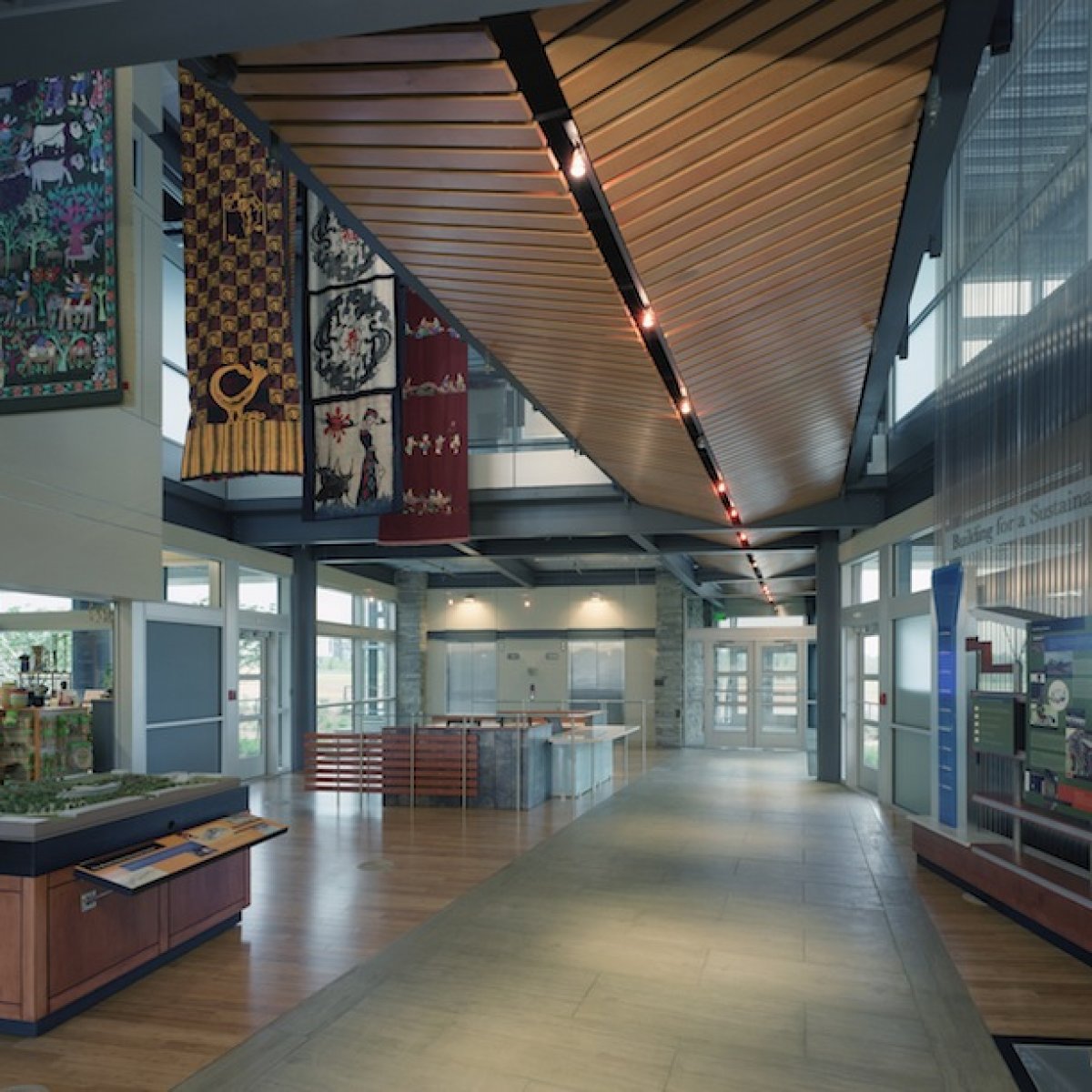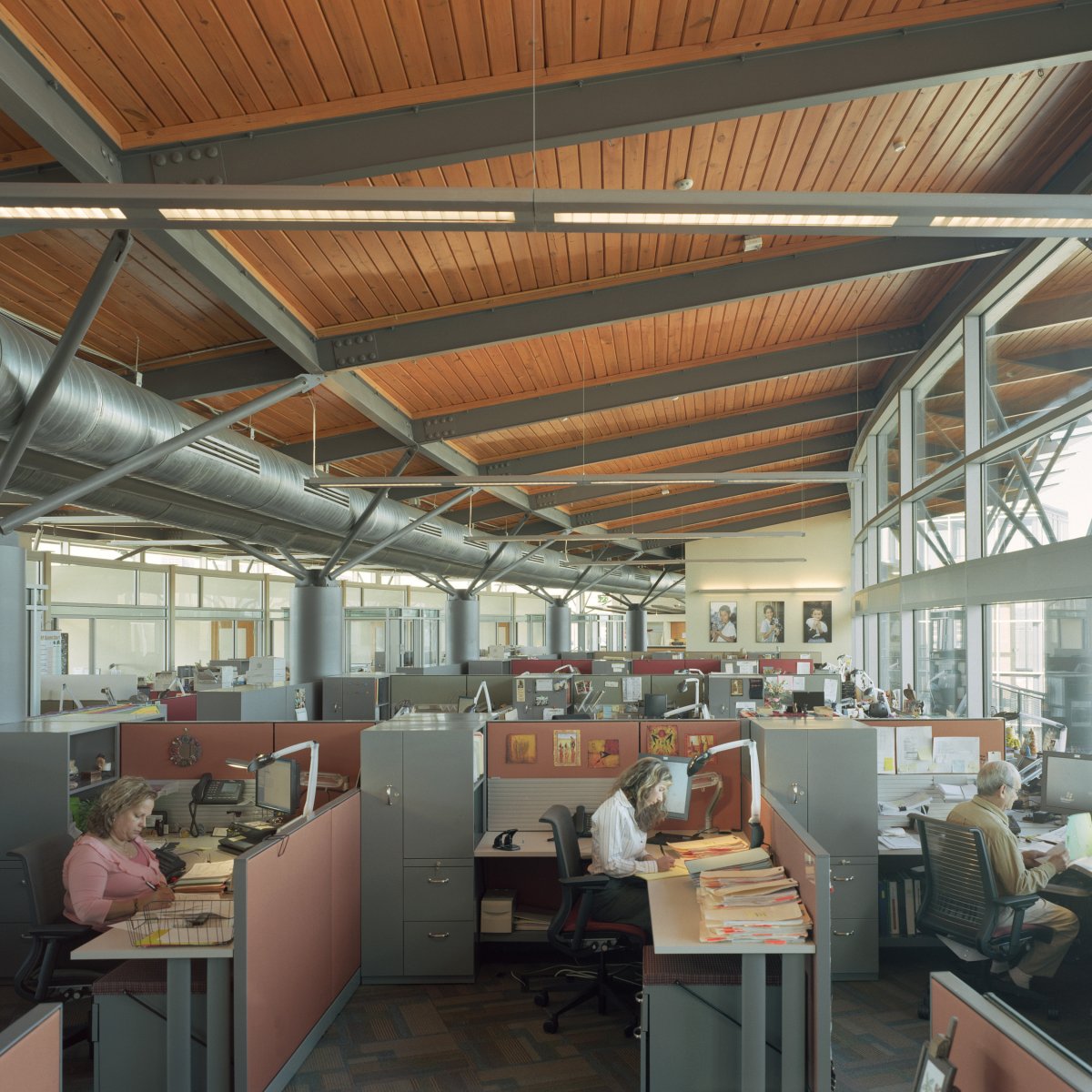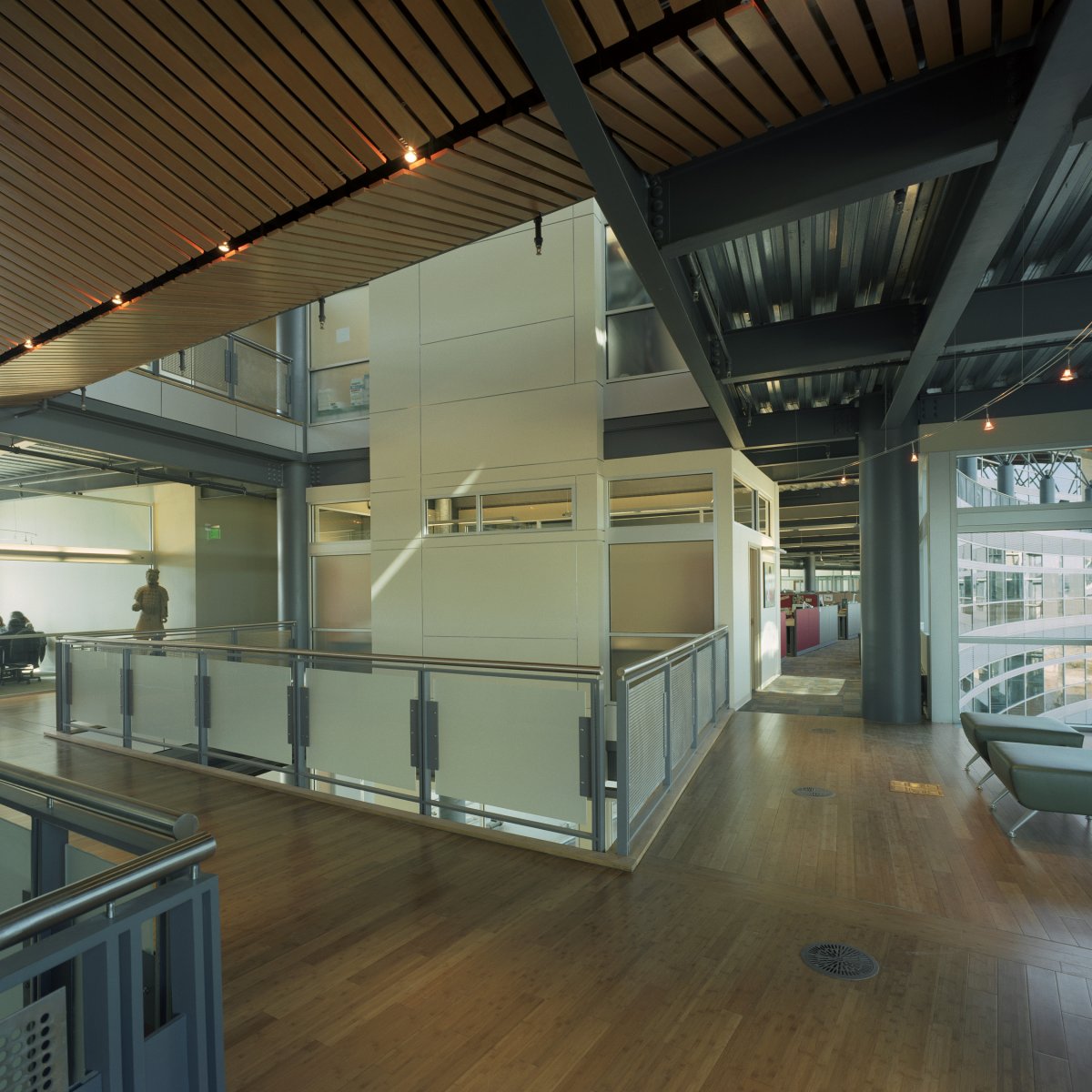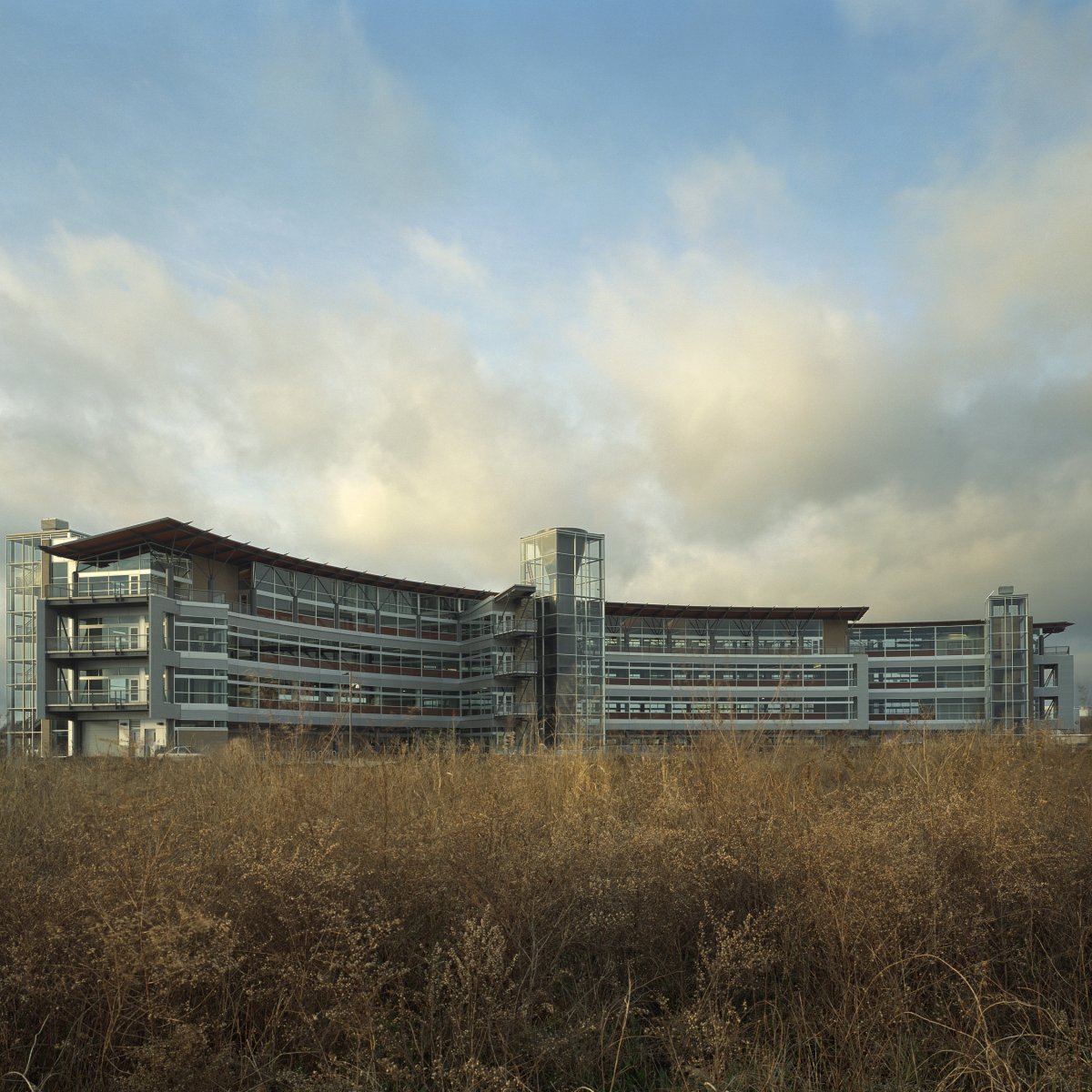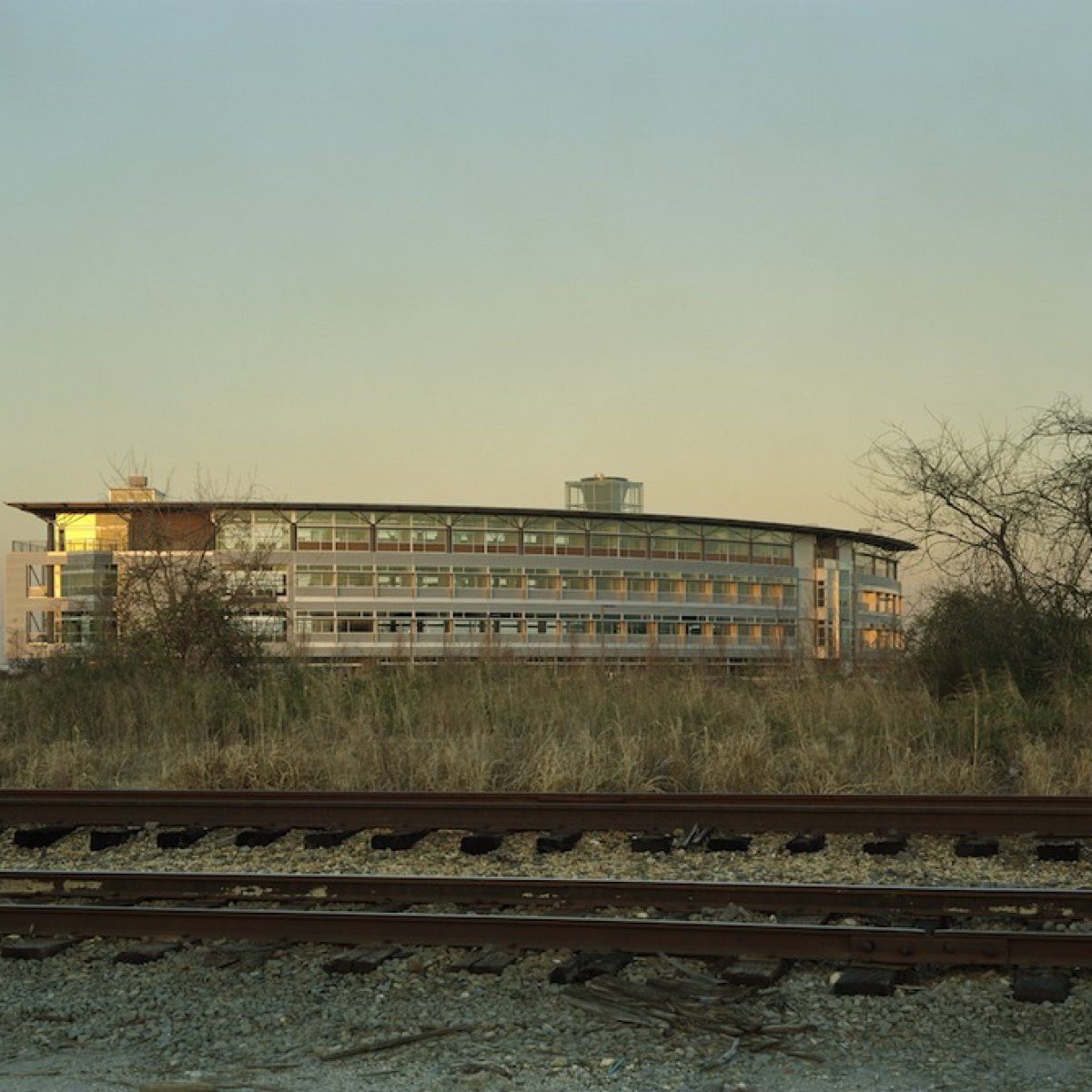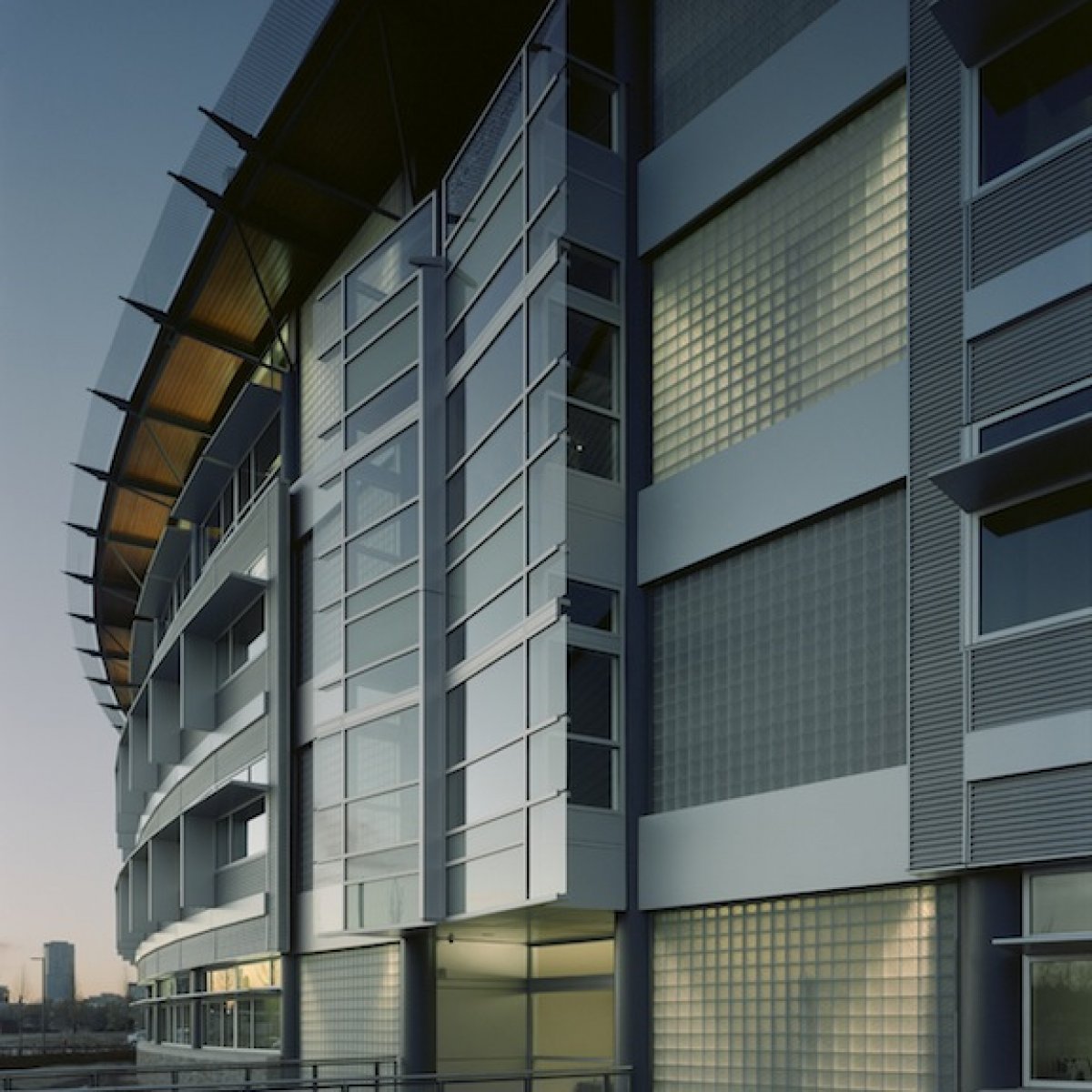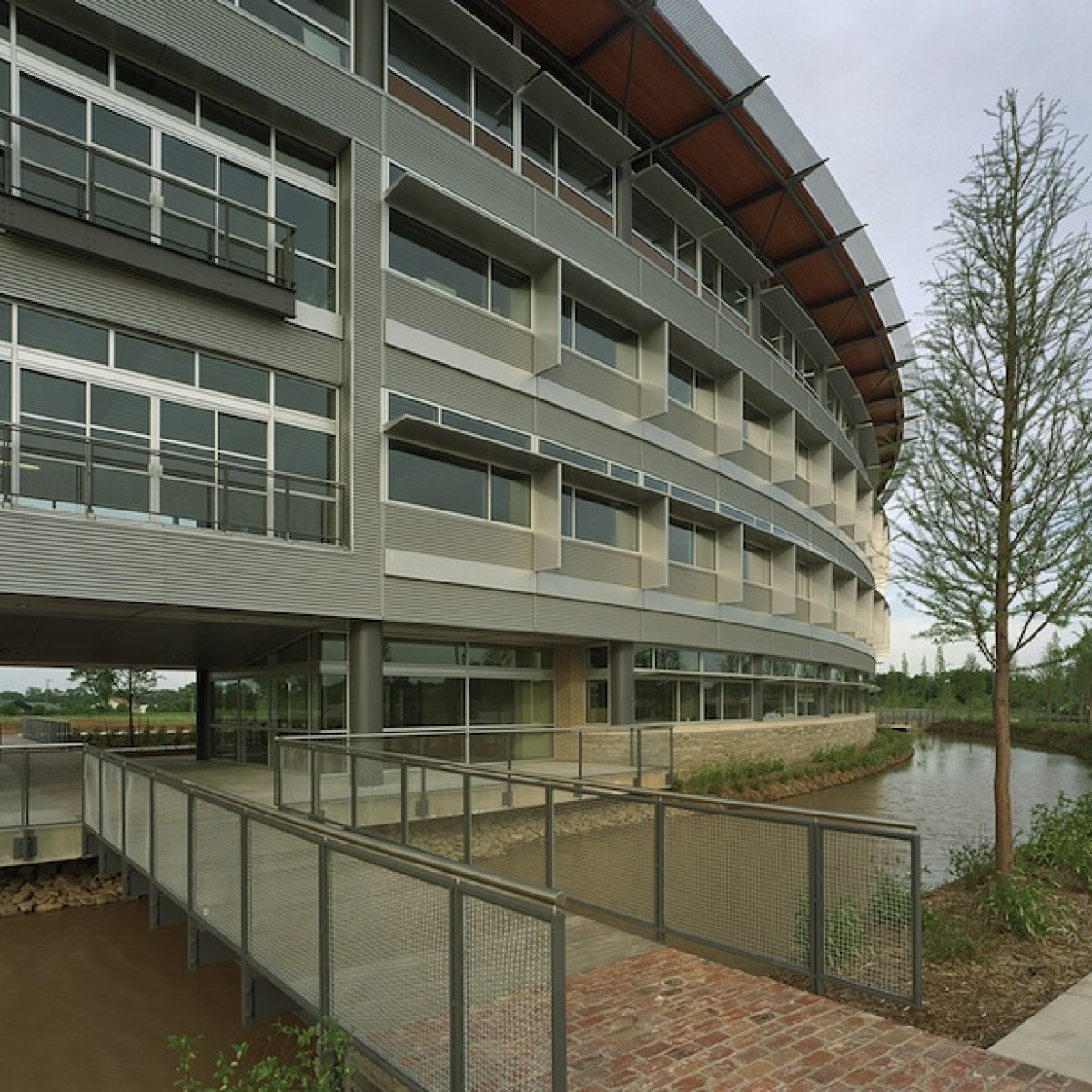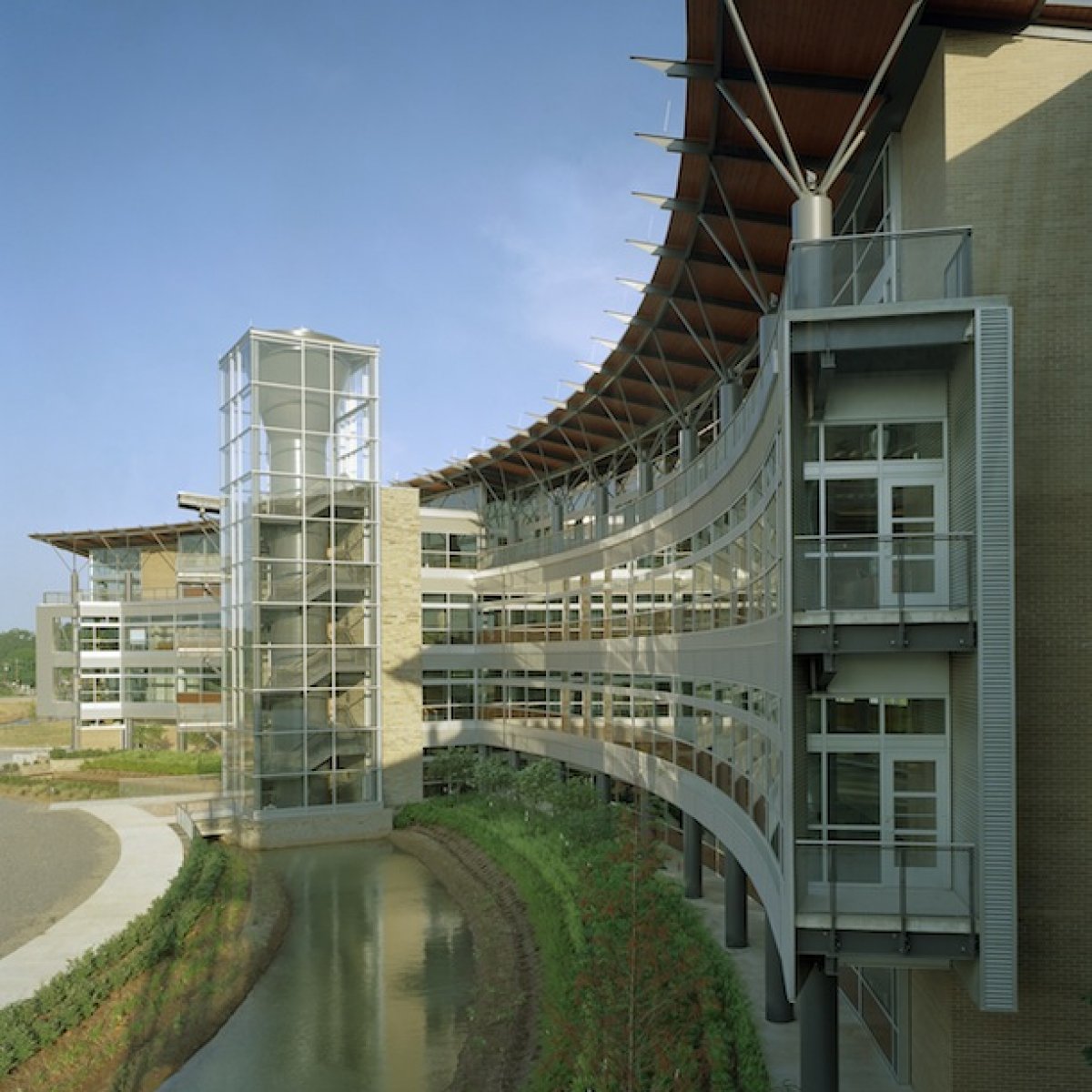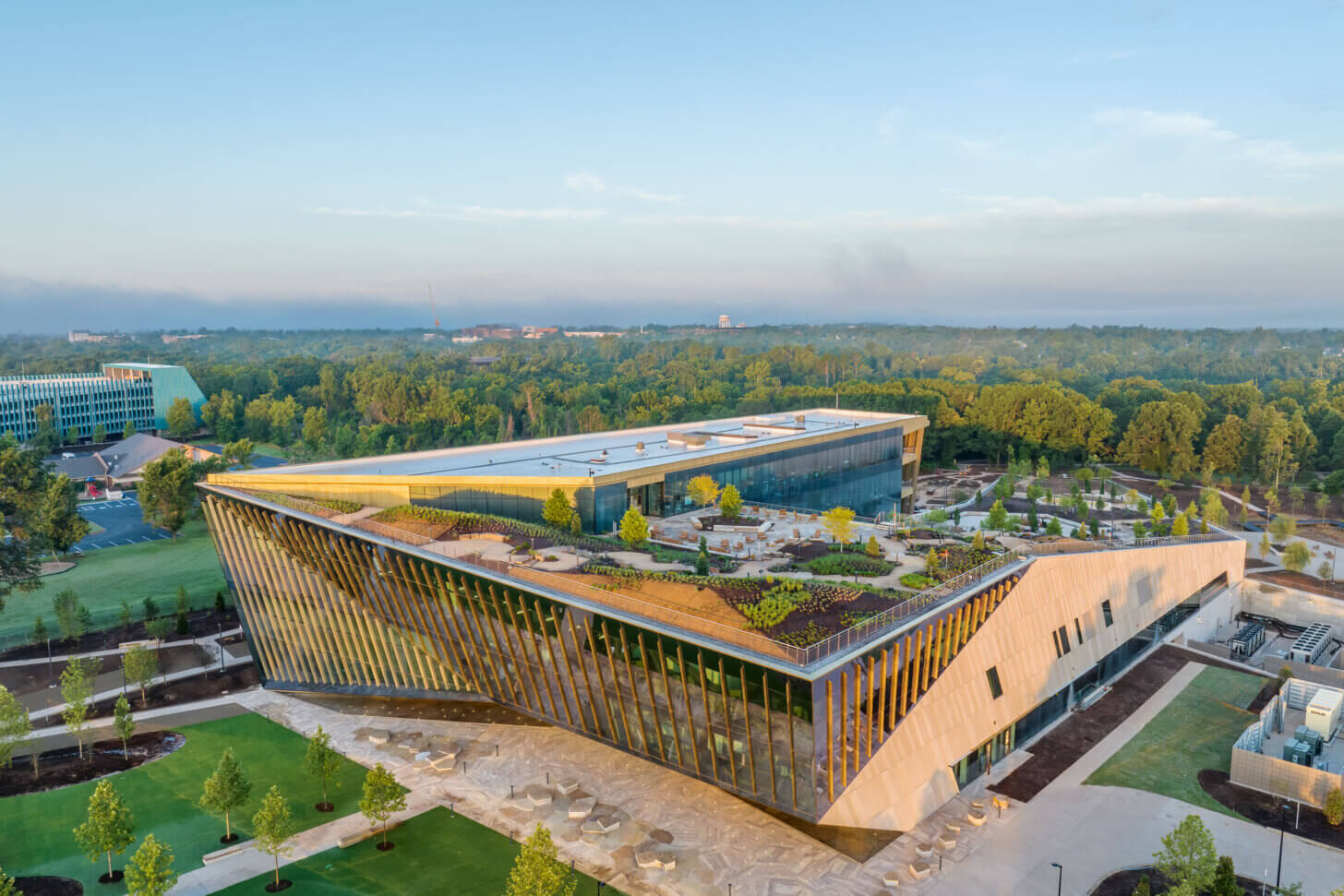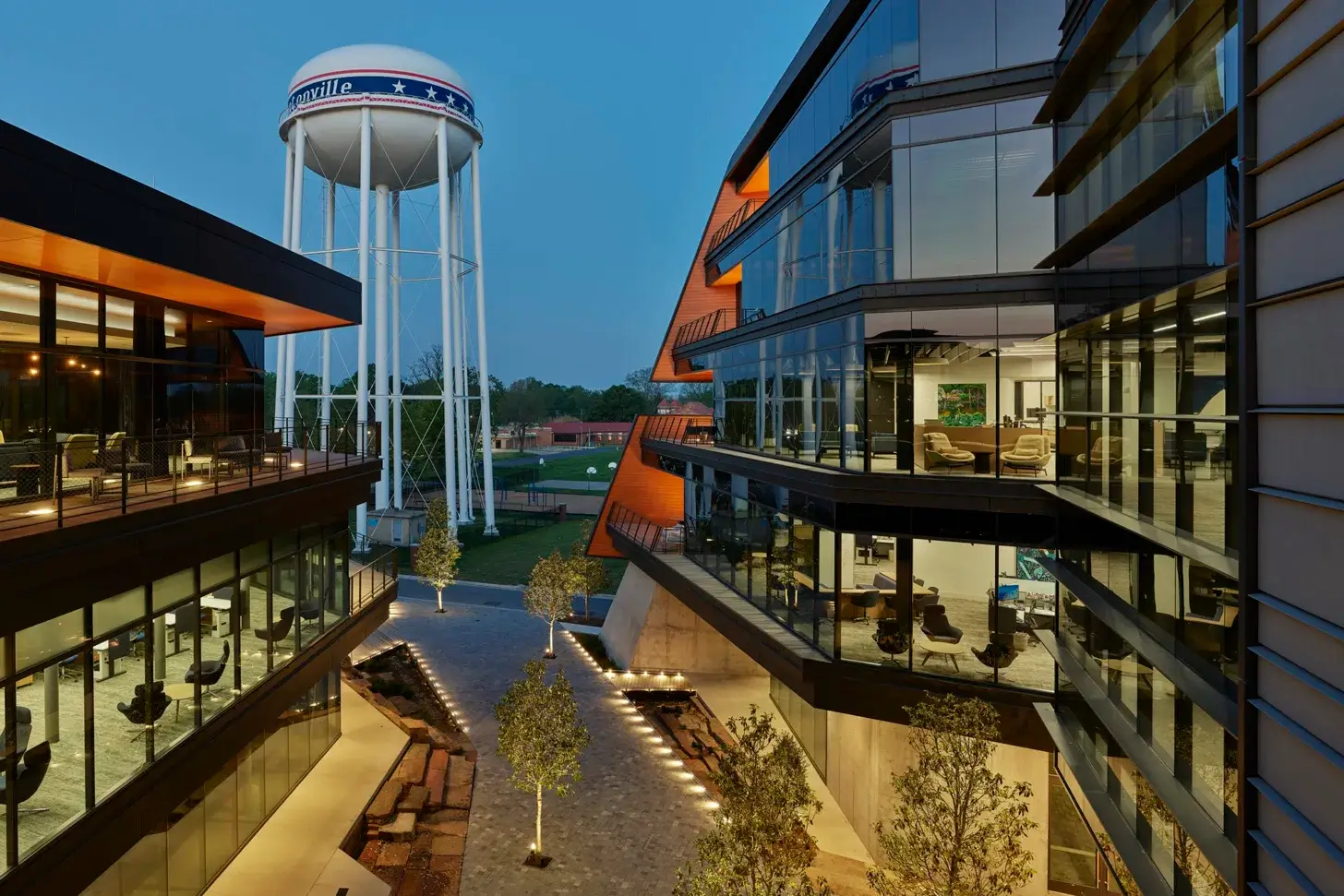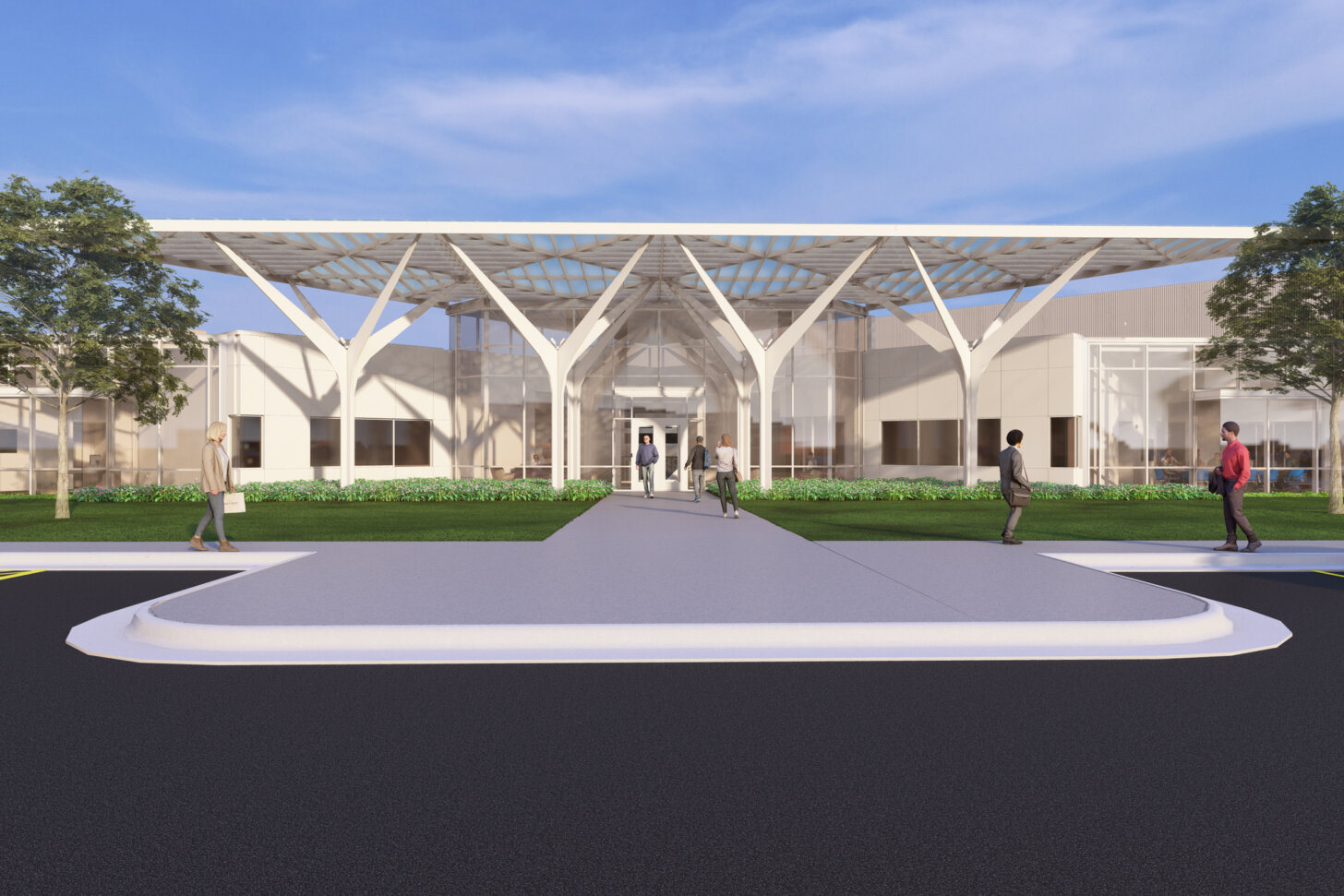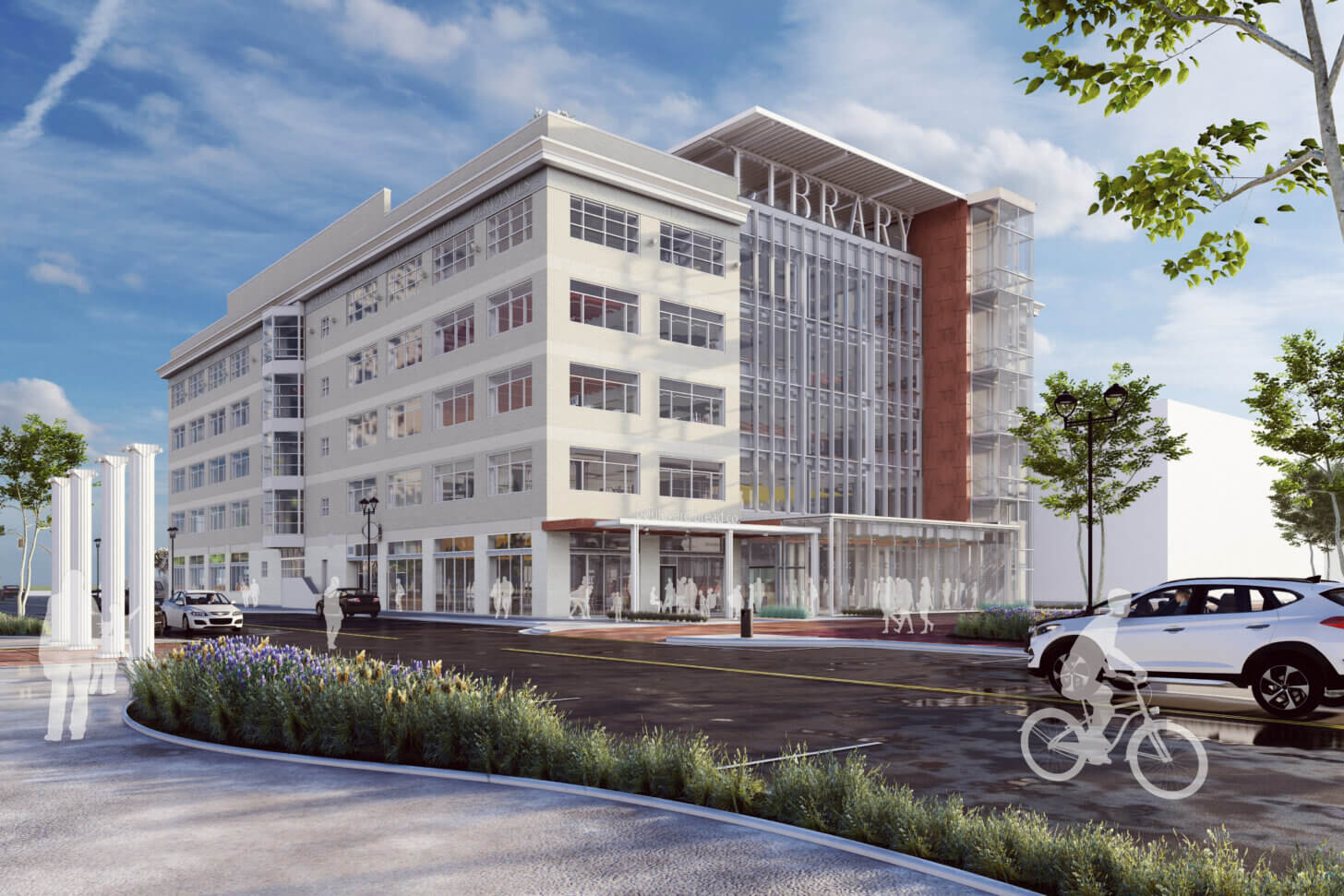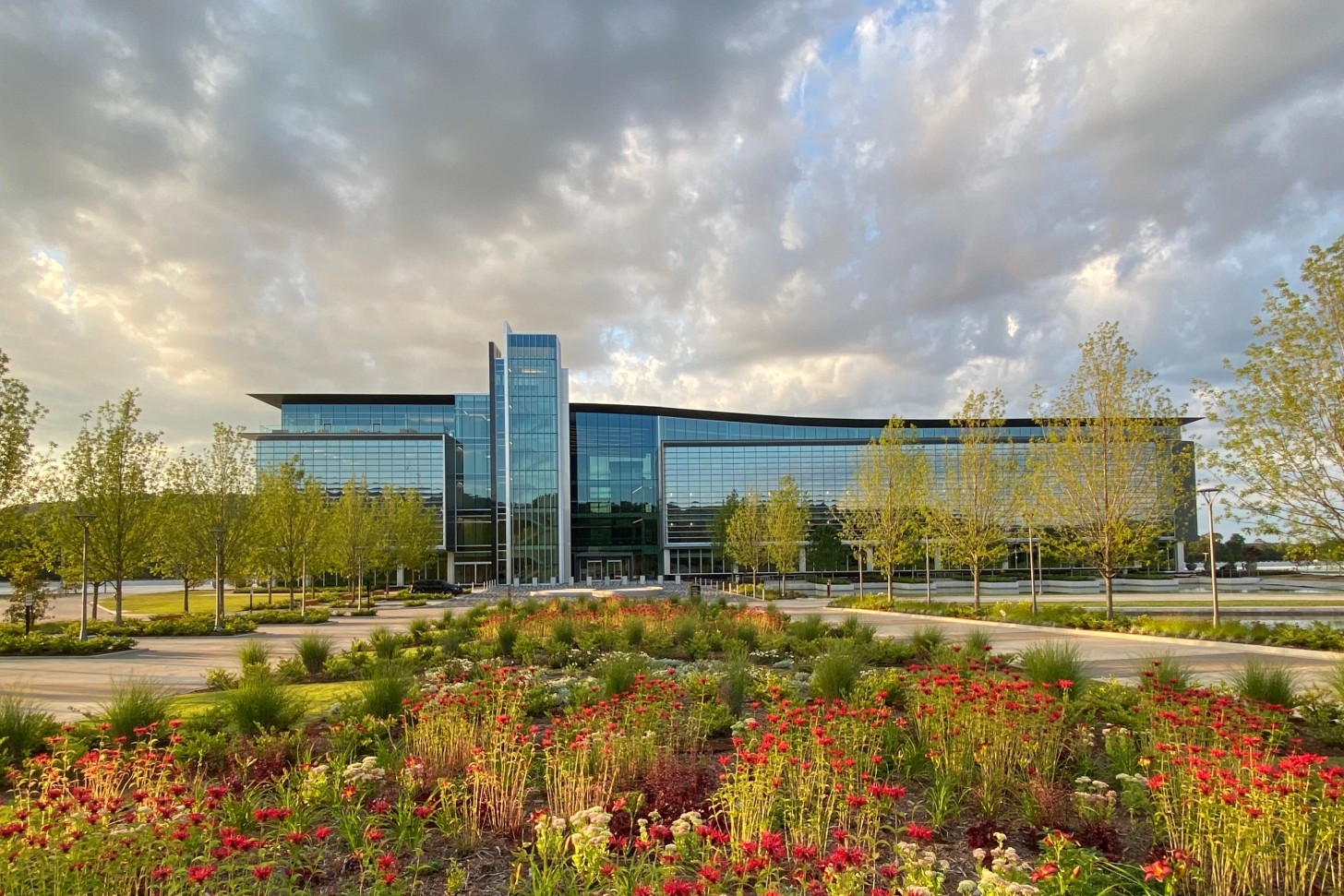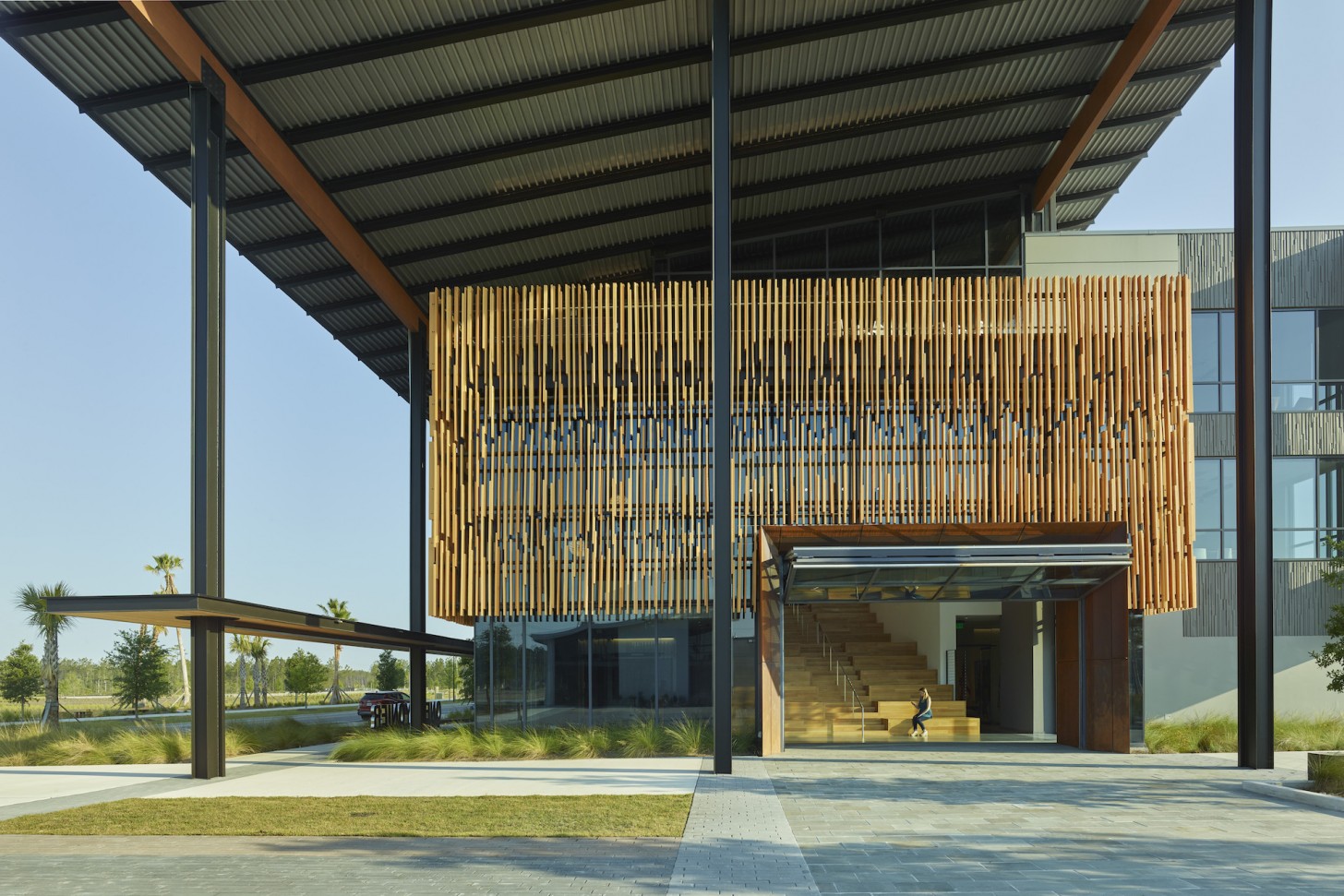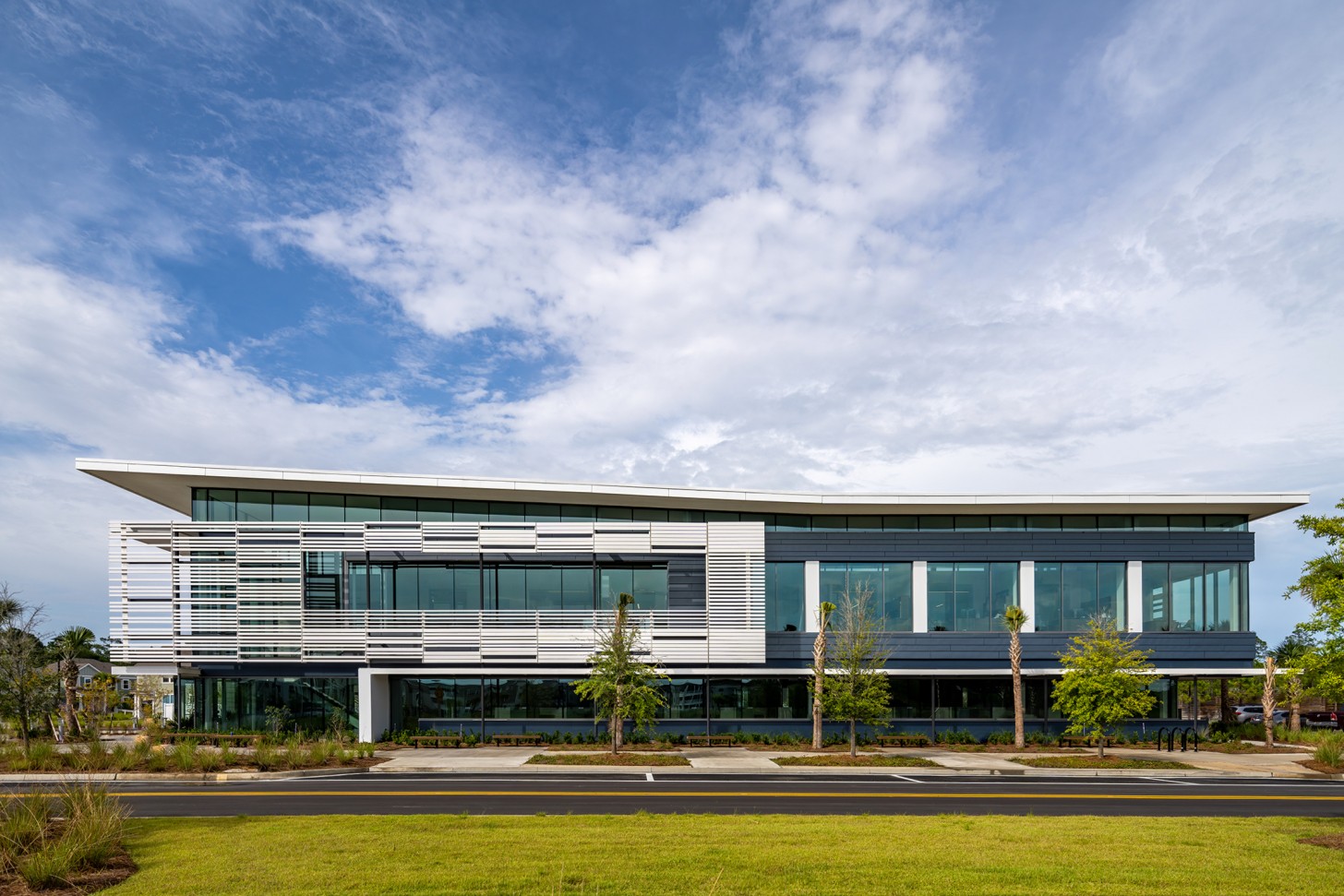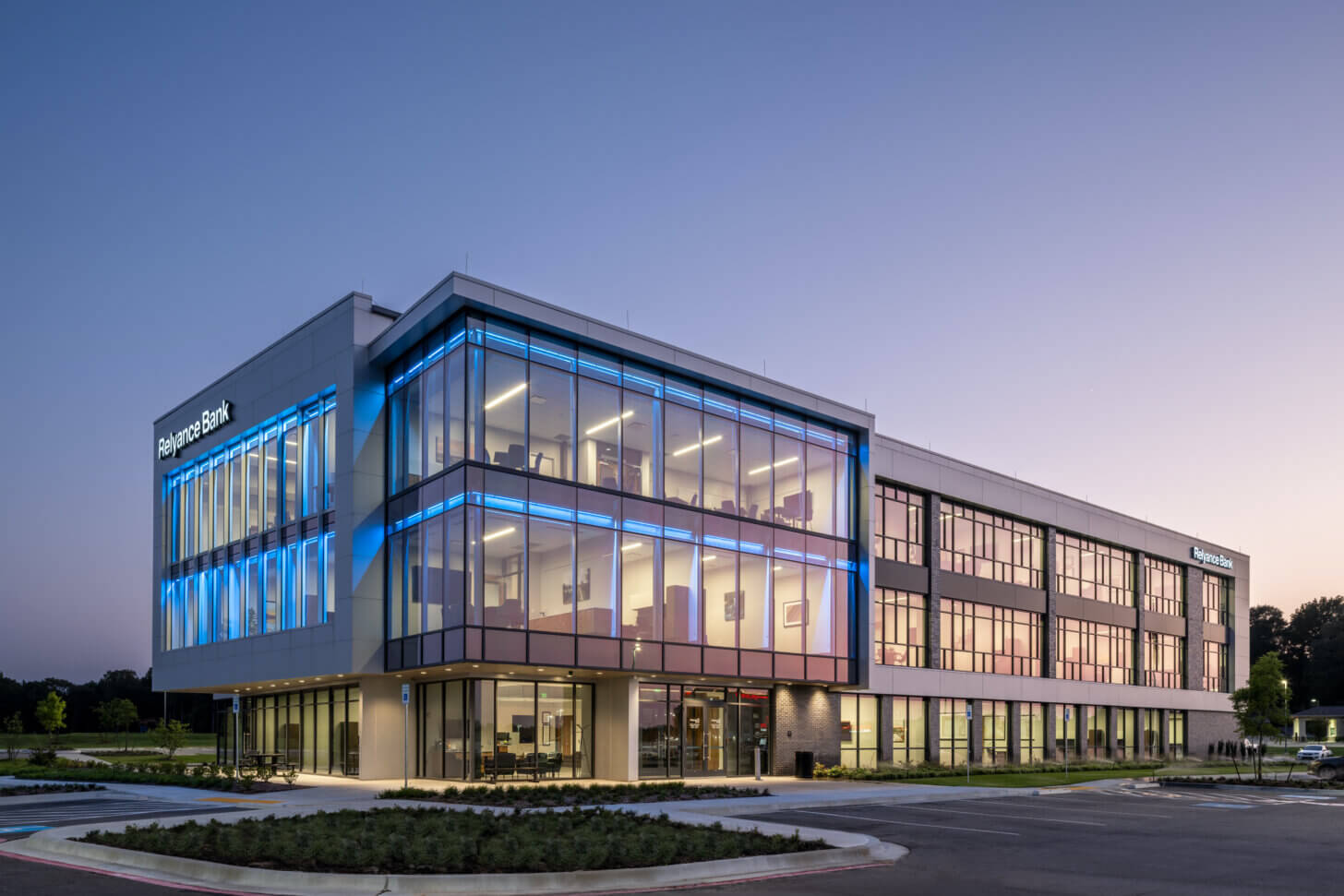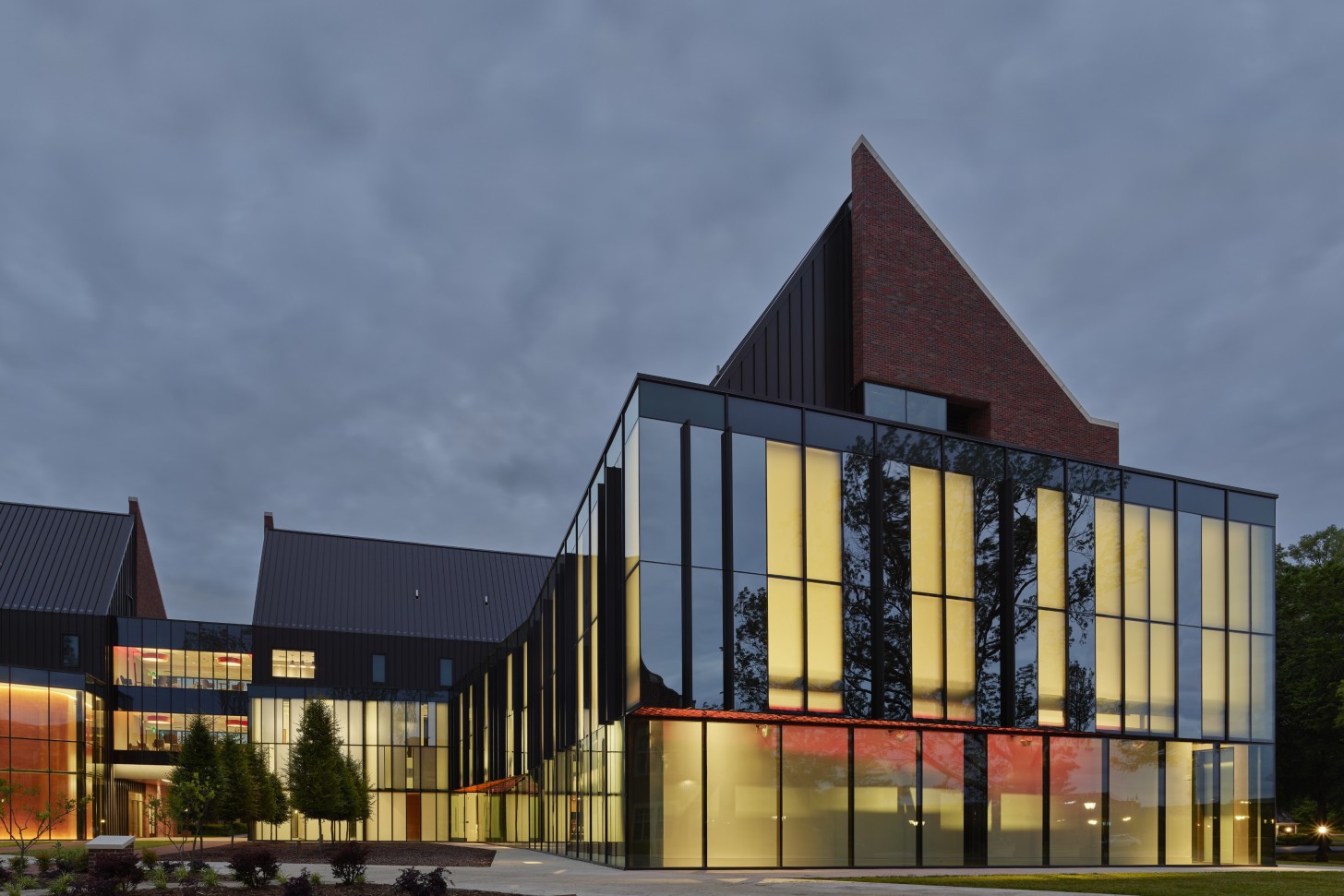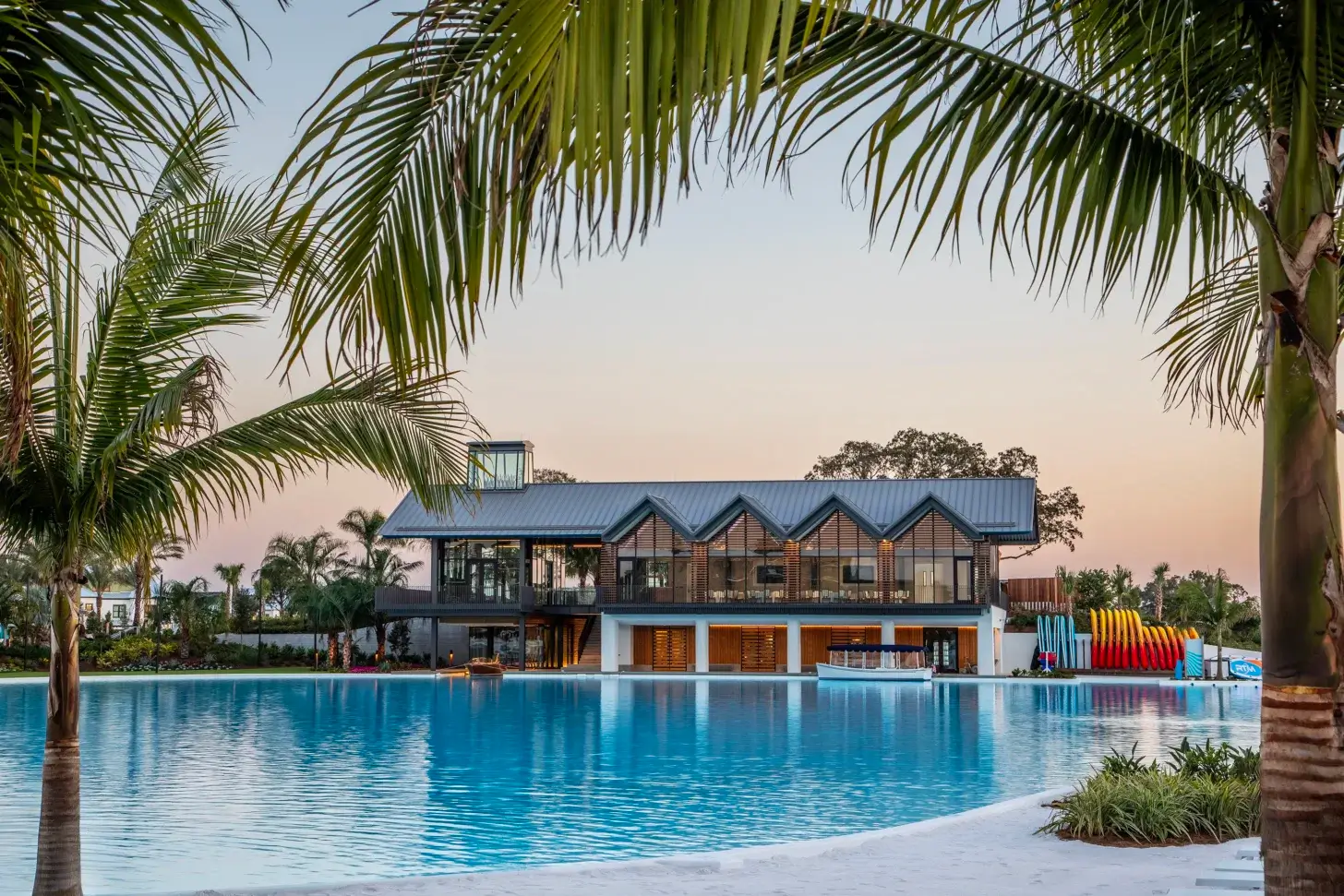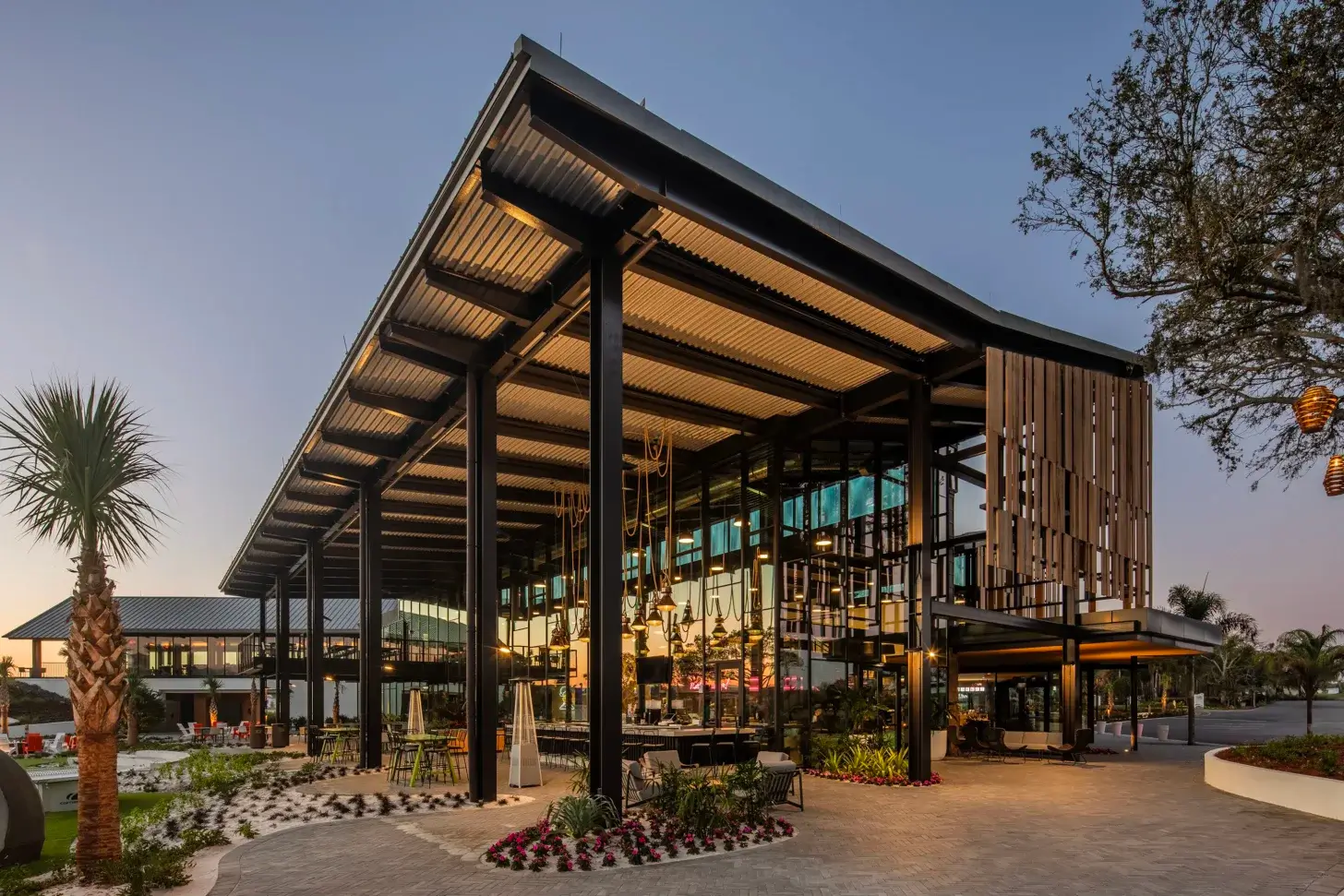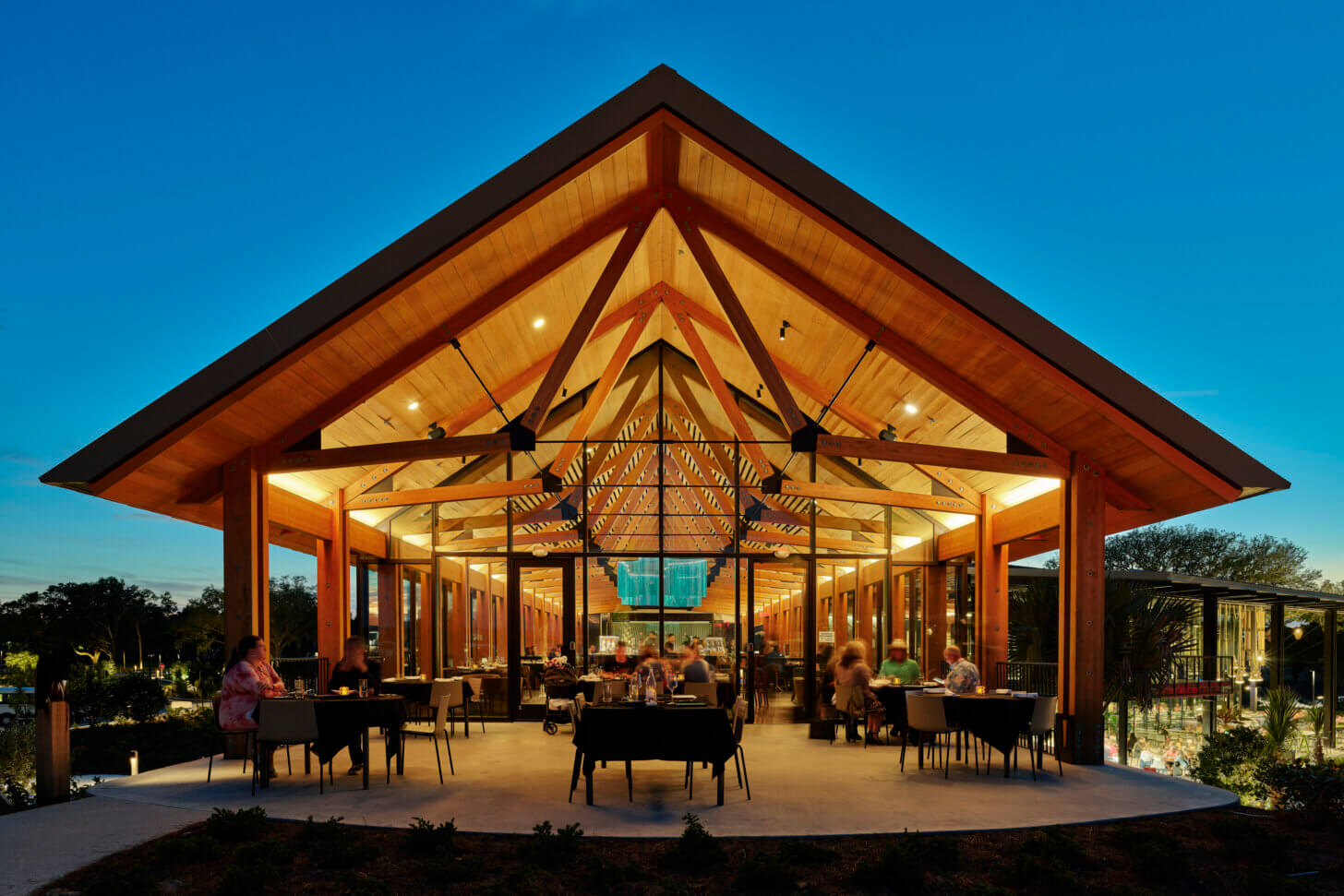“In all of my travels around the world, the important decisions were made where people sat in a circle, facing each other as equals…” – Dan West, founder Heifer International
A National AIA Honor Award winning project, Polk Stanley Wilcox Architects designed every inch of Heifer International’s Headquarters to speak about their mission. A world hunger organization, Heifer’s impact in communities starts with the delivery of one animal to one family, known as “passing on the gift”. Like a drop of water generates ripples that flow outward from the impact point, the gift of an animal creates “concentric rings of influence” radiating through a village, allowing sustainable methods taught to the original family to be passed on to others as the animal’s offspring are gifted. Our goal was to design a sustainable headquarters that would exemplify Heifer’s mission, express their sustainable attributes for educational purposes, and allow all employees to work as equals. Heifer would be able to practice what it preaches.
Completed in 2006 for $188.00 per sf, the building’s gentle curve emanates from the overall multi-phase master plan, conceived as a series of concentric rings expanding outward from a central commons that represents the “impact point” of a gift. This commons begins the public educational experience, leading to the Murphy Keller Education Center, which PSW also designed. The reclaimed site, among the largest brownfield recoveries in Arkansas, was once an industrial railroad switching yard whose tracks bisected the property. Using as industrial crusher, existing masonry structures were crushed into a gravel material for use on the site. Bricks were reclaimed for site paving, and 97% of the materials were recycled. The savings in reclaimed usable material paid for the entire site demolition.
Polk Stanley Wilcox’s design of the ringed site physically and metaphorically expresses the ripple effect of passing of the gift, which is also reflected in the Headquarters’ layered planning. Crafted to maximize sunlight and rainwater while conserving energy and avoiding pollutants, the headquarters targeted a 55% energy saving over conventional buildings and received a LEED Platinum rating.

